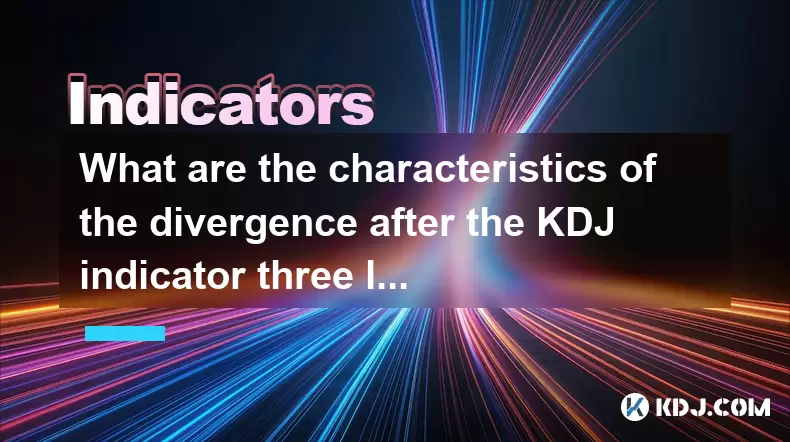-
 Bitcoin
Bitcoin $117400
-0.46% -
 Ethereum
Ethereum $3768
0.60% -
 XRP
XRP $3.551
2.09% -
 Tether USDt
Tether USDt $1.000
0.00% -
 Solana
Solana $203.2
11.30% -
 BNB
BNB $770.9
1.92% -
 USDC
USDC $0.9999
0.01% -
 Dogecoin
Dogecoin $0.2709
-0.02% -
 Cardano
Cardano $0.9024
4.49% -
 TRON
TRON $0.3139
0.60% -
 Hyperliquid
Hyperliquid $45.60
-1.41% -
 Stellar
Stellar $0.4730
-1.34% -
 Sui
Sui $4.025
2.15% -
 Chainlink
Chainlink $19.79
2.19% -
 Hedera
Hedera $0.2724
-2.39% -
 Avalanche
Avalanche $25.93
3.05% -
 Bitcoin Cash
Bitcoin Cash $524.0
-1.83% -
 Shiba Inu
Shiba Inu $0.00001558
0.50% -
 Litecoin
Litecoin $116.7
-0.30% -
 UNUS SED LEO
UNUS SED LEO $8.996
0.00% -
 Toncoin
Toncoin $3.334
1.83% -
 Polkadot
Polkadot $4.506
0.34% -
 Uniswap
Uniswap $10.99
4.83% -
 Ethena USDe
Ethena USDe $1.001
0.03% -
 Pepe
Pepe $0.00001461
3.17% -
 Monero
Monero $320.3
-1.01% -
 Bitget Token
Bitget Token $4.935
0.36% -
 Dai
Dai $0.9998
0.00% -
 Aave
Aave $322.4
-1.25% -
 Bittensor
Bittensor $455.6
9.33%
What are the characteristics of the divergence after the KDJ indicator three lines merge into one? What are the direction selection signals?
KDJ lines merging into one signals potential trend reversals in crypto markets; traders should watch for separation and volume to confirm direction.
May 29, 2025 at 03:14 am

The KDJ indicator is a popular tool used in the cryptocurrency trading community to identify potential trend reversals and to gauge the momentum of price movements. When the three lines of the KDJ indicator—namely the K line, D line, and J line—merge into one, it often signifies a significant event in the market. This phenomenon is known as a divergence, and understanding its characteristics and the subsequent direction selection signals can be crucial for traders looking to make informed decisions.
Characteristics of Divergence After KDJ Lines Merge
The merging of the KDJ lines into one is a rare but significant event. When this happens, it typically indicates a period of consolidation or a temporary halt in the prevailing trend. This convergence can be observed in both bullish and bearish markets and often precedes a breakout in one direction or another.
One key characteristic of this divergence is the reduction in volatility. When the three lines merge, the market tends to be in a state of equilibrium, with buying and selling pressures balancing out. This can be seen as a calm before the storm, as traders await the next significant move.
Another important aspect is the potential for a false breakout. After the lines merge, the price may initially move in one direction, only to reverse and move in the opposite direction. This can lead to false signals, making it crucial for traders to wait for confirmation before acting on any potential breakout.
Direction Selection Signals Following KDJ Divergence
Once the KDJ lines have merged and a divergence has been identified, traders need to look for specific signals that can help them determine the likely direction of the next move. These signals can be broken down into bullish and bearish indicators.
Bullish Direction Selection Signals
A bullish signal is often indicated when the merged KDJ lines begin to separate, with the K line crossing above the D line. This crossover suggests that the momentum is shifting towards the bulls, and a potential upward breakout could be imminent.
Another bullish indicator is the position of the J line. If the J line starts to move above the K and D lines after the merge, it can be a strong signal that the bulls are gaining control and that a bullish trend may be starting.
Volume is also a critical factor to consider. If the volume increases significantly as the KDJ lines begin to separate and the price moves upwards, this can confirm the bullish signal and increase the likelihood of a sustained upward trend.
Bearish Direction Selection Signals
On the bearish side, a signal is often indicated when the merged KDJ lines start to separate, with the K line crossing below the D line. This crossover suggests that the momentum is shifting towards the bears, and a potential downward breakout could be imminent.
The position of the J line is equally important in bearish scenarios. If the J line starts to move below the K and D lines after the merge, it can be a strong signal that the bears are gaining control and that a bearish trend may be starting.
Volume plays a crucial role in bearish signals as well. If the volume increases significantly as the KDJ lines begin to separate and the price moves downwards, this can confirm the bearish signal and increase the likelihood of a sustained downward trend.
Practical Application of KDJ Divergence in Cryptocurrency Trading
To effectively use the KDJ divergence in cryptocurrency trading, traders need to follow a systematic approach. Here's how to apply the knowledge of KDJ divergence and direction selection signals in real-world trading scenarios:
Identify the Merging of KDJ Lines: Start by monitoring your chosen cryptocurrency's price chart and the KDJ indicator. Look for instances where the K, D, and J lines converge into a single line. This is your initial signal that a divergence might be forming.
Confirm the Divergence: Once the lines have merged, watch for the next move. If the price continues to move in one direction but the KDJ lines do not follow, you have a confirmed divergence. This could be a bullish divergence if the price is rising or a bearish divergence if the price is falling.
Wait for Separation of KDJ Lines: After confirming the divergence, wait for the KDJ lines to start separating. This is a critical step, as premature action can lead to false breakouts.
Analyze Direction Selection Signals: Once the lines begin to separate, look for the direction selection signals mentioned earlier. For a bullish signal, look for the K line crossing above the D line and the J line moving above the K and D lines. For a bearish signal, look for the K line crossing below the D line and the J line moving below the K and D lines.
Consider Volume and Other Indicators: Before making a trade, consider the volume and other technical indicators such as the RSI or MACD to confirm the direction selection signals. High volume can validate the signal, while other indicators can provide additional context.
Execute the Trade: Once all signals align, execute your trade in the direction indicated by the KDJ divergence and direction selection signals. Set appropriate stop-loss and take-profit levels to manage risk.
Common Pitfalls and How to Avoid Them
When trading based on KDJ divergence, it's important to be aware of common pitfalls that can lead to losses. Here are some key points to consider:
False Breakouts: As mentioned earlier, false breakouts are common after KDJ lines merge. To avoid falling into this trap, always wait for confirmation signals before entering a trade.
Overtrading: The excitement of seeing KDJ lines merge and diverge can lead to overtrading. Stick to your trading plan and only take trades that meet your criteria.
Ignoring Other Indicators: While the KDJ indicator is powerful, it should not be used in isolation. Always cross-reference with other indicators and market conditions to increase the accuracy of your trades.
Emotional Trading: The fear of missing out (FOMO) can lead to impulsive trading decisions. Stay disciplined and follow your trading strategy, even if it means missing out on some opportunities.
Real-World Examples of KDJ Divergence in Cryptocurrency Markets
To illustrate how KDJ divergence and direction selection signals work in practice, let's look at a few real-world examples from the cryptocurrency markets.
Bitcoin (BTC) Example: Suppose you are monitoring the daily chart of Bitcoin and notice that the KDJ lines have merged into one. After a period of consolidation, the lines start to separate, with the K line crossing above the D line and the J line moving above both. The volume increases significantly as the price begins to rise. This is a clear bullish signal, and you might consider entering a long position.
Ethereum (ETH) Example: In another scenario, you are watching the hourly chart of Ethereum and see the KDJ lines converge. After the merge, the lines begin to separate, with the K line crossing below the D line and the J line moving below both. The volume increases as the price starts to fall. This is a clear bearish signal, and you might consider entering a short position.
Altcoin Example: For an altcoin like Cardano (ADA), you might observe the KDJ lines merging on the 4-hour chart. After the merge, the lines start to separate, but the price continues to move in the opposite direction of the KDJ lines. This is a divergence, and you need to wait for the direction selection signals to confirm the next move. If the K line crosses above the D line and the J line moves above both, it could be a bullish signal, and you might consider entering a long position.
Frequently Asked Questions
Q: How often does the KDJ lines merging into one occur in the cryptocurrency market?
A: The frequency of KDJ lines merging into one can vary depending on the time frame and the specific cryptocurrency being traded. On shorter time frames like the 1-hour or 4-hour charts, this phenomenon might occur more frequently than on longer time frames like the daily or weekly charts. However, it is still considered a relatively rare event and should be treated with caution.
Q: Can the KDJ indicator be used effectively on all time frames?
A: Yes, the KDJ indicator can be used on various time frames, from the 1-minute chart to the weekly chart. However, the effectiveness of the indicator may vary depending on the time frame. Shorter time frames might produce more signals, but these signals can be less reliable due to increased noise. Longer time frames tend to produce fewer, but more reliable, signals.
Q: How can I combine the KDJ indicator with other technical indicators for better results?
A: Combining the KDJ indicator with other technical indicators can enhance your trading strategy. For example, you can use the Relative Strength Index (RSI) to confirm overbought or oversold conditions indicated by the KDJ. The Moving Average Convergence Divergence (MACD) can be used to confirm trend direction and momentum. Additionally, volume indicators can help validate the strength of a signal. Always ensure that multiple indicators align before making a trading decision.
Q: Is it possible to automate trading based on KDJ divergence and direction selection signals?
A: Yes, it is possible to automate trading based on KDJ divergence and direction selection signals using algorithmic trading platforms. You can program your trading bot to identify when the KDJ lines merge, wait for the lines to separate, and then look for the direction selection signals before executing a trade. However, it's important to thoroughly backtest your strategy and consider market conditions that might affect the performance of the KDJ indicator.
Disclaimer:info@kdj.com
The information provided is not trading advice. kdj.com does not assume any responsibility for any investments made based on the information provided in this article. Cryptocurrencies are highly volatile and it is highly recommended that you invest with caution after thorough research!
If you believe that the content used on this website infringes your copyright, please contact us immediately (info@kdj.com) and we will delete it promptly.
- MoonBull's Whitelist Mania: Your Last Shot at 100x Crypto Gains?
- 2025-07-22 10:30:12
- Meme Coins in 2025: Explosive Gains or Fading Fad?
- 2025-07-22 10:30:12
- Kim Keon-hee Crypto Probe: Scandal Rocks South Korea's Political Scene
- 2025-07-22 10:50:12
- ETH Holders in Profit: Value Surge Fuels Bullish Sentiment
- 2025-07-22 09:30:13
- NEAR Protocol's AI Leap: Double-Digit Gains and Future Potential
- 2025-07-22 09:30:13
- Cryptos, Meme Coins, Buy Now: Riding the Wave of Hype
- 2025-07-22 08:30:13
Related knowledge

Advanced RSI strategies for crypto
Jul 13,2025 at 11:01am
Understanding the Basics of RSI in Cryptocurrency TradingThe Relative Strength Index (RSI) is a momentum oscillator used to measure the speed and chan...

Crypto RSI for day trading
Jul 12,2025 at 11:14am
Understanding RSI in the Context of Cryptocurrency TradingThe Relative Strength Index (RSI) is a momentum oscillator used to measure the speed and cha...

Crypto RSI for scalping
Jul 12,2025 at 11:00pm
Understanding RSI in the Context of Crypto TradingThe Relative Strength Index (RSI) is a momentum oscillator widely used by traders to measure the spe...

What does an RSI of 30 mean in crypto
Jul 15,2025 at 07:07pm
Understanding RSI in Cryptocurrency TradingRelative Strength Index (RSI) is a momentum oscillator widely used in cryptocurrency trading to measure the...

What does an RSI of 70 mean in crypto
Jul 13,2025 at 06:07pm
Understanding the RSI Indicator in Cryptocurrency TradingThe Relative Strength Index (RSI) is a widely used technical analysis tool that helps traders...

Does RSI work in a bear market for crypto
Jul 16,2025 at 01:36pm
Understanding RSI in Cryptocurrency TradingThe Relative Strength Index (RSI) is a momentum oscillator used by traders to measure the speed and change ...

Advanced RSI strategies for crypto
Jul 13,2025 at 11:01am
Understanding the Basics of RSI in Cryptocurrency TradingThe Relative Strength Index (RSI) is a momentum oscillator used to measure the speed and chan...

Crypto RSI for day trading
Jul 12,2025 at 11:14am
Understanding RSI in the Context of Cryptocurrency TradingThe Relative Strength Index (RSI) is a momentum oscillator used to measure the speed and cha...

Crypto RSI for scalping
Jul 12,2025 at 11:00pm
Understanding RSI in the Context of Crypto TradingThe Relative Strength Index (RSI) is a momentum oscillator widely used by traders to measure the spe...

What does an RSI of 30 mean in crypto
Jul 15,2025 at 07:07pm
Understanding RSI in Cryptocurrency TradingRelative Strength Index (RSI) is a momentum oscillator widely used in cryptocurrency trading to measure the...

What does an RSI of 70 mean in crypto
Jul 13,2025 at 06:07pm
Understanding the RSI Indicator in Cryptocurrency TradingThe Relative Strength Index (RSI) is a widely used technical analysis tool that helps traders...

Does RSI work in a bear market for crypto
Jul 16,2025 at 01:36pm
Understanding RSI in Cryptocurrency TradingThe Relative Strength Index (RSI) is a momentum oscillator used by traders to measure the speed and change ...
See all articles

























































































